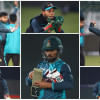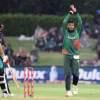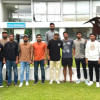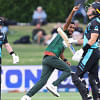Mirpur gives Southee 'worst wicket’ experience

A gulf in the cricketing culture separating Bangladesh and a top Test side like New Zealand was once again showcased by how the two captains remarked about the Mirpur pitch, which staged the just-concluded second and final Test between the two sides.
Despite winning by four wickets yesterday, Kiwi skipper Tim Southee was scathing in his remarks about the poor playing surface on display at the Sher-e-Bangla National Cricket Stadium but his counterpart backed it.
It is highly unusual that a captain would suggest that a wicket was bad even after winning a Test that allowed them to end the series on level terms. But Mirpur has a reputation, and this time it served something special for Southee to make such remarks.
Only 178.1 overs -- the seventh-lowest for a Test where at least 36 wickets fell -- were needed to produce an outcome as the match saw a result on Day Four, even after the second day was completely washed out by rain.
"Probably the worst wicket I've come across in my career," Southee, with experience of playing 96 Tests since 2008, said in the post-match press conference yesterday.
"Just like I said, the balance between bat and ball was heavily favoured into the bowler's hands. So, I think for the match to be over in 170 overs sort of reflects that.
"So, for our guys to scrap away and then come away with the win was a big pleasure," the 34-year-old added while talking about whether it was the most difficult wicket he has seen from a batting perspective.
Southee and Kyle Jamieson, the two pacers bowled just 15.2 overs in the entire Test match, producing two wickets. Shoriful Islam, the lone pacer in the Bangladesh ranks bowled nine overs, bagging three wickets in the match.
"There are a number of ways I could describe that wicket. I think for the match to be all over in [around] 170 overs is a fair reflection on the wicket. I think [it's] just a scrappy Test match.
"Obviously, a tough wicket. Runs were hard to come by. And just those little moments and partnerships throughout were crucial. Whereas in other matches, I guess when conditions are a little bit more even between bat and ball, they don't get noticed as much," Southee pointed out.
Glenn Phillips, playing just his third Test, already carrying the tag of a white-ball specialist, turned out to be the most effective batter in these conditions. He followed up his 87 from the first innings with an unbeaten 40, part of a crucial 70-run partnership with Mitchell Santner.
Phillips also contributed with the ball, picking up three wickets in Bangladesh's first innings. Southee opined that Phillips' ability to play on difficult wickets became the difference between the two sides.
"I think it's just the way that Glenn [Phillips] plays, and the way that he's able to come in and only in his second and third test match, and to come in and play the way he knows how. A lot of his great innings have been on difficult wickets. He has a way of doing special things on tricky wickets. So, I think it's just his positive mindset on a wicket like that was very crucial," the Kiwi skipper said further.

 For all latest news, follow The Daily Star's Google News channel.
For all latest news, follow The Daily Star's Google News channel. 








Comments